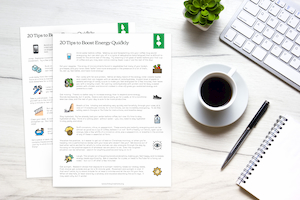Today’s post features a few key takeaways from a recent Wellness Your Way podcast interview. Find the full episode here and be sure to subscribe to Wellness Your Way so you don’t miss future episodes!
Guest Bio: Rick Olderman
Rick Olderman is a sports and orthopedic physical therapist with more than 25 years’ experience that specializes in helping people with chronic pain experience a pain-free life.
Rick has written the popular Fixing You® series of books to help people with chronic pain or injuries. More recently, Rick has created downloadable video home programs to help people solve pain from head to toe. These programs include his pioneering approach that has helped solve hundreds of cases of chronic pain at his clinic for the last 10 years.
Rick has a new book, Solving the Pain Puzzle, coming out in 2023 and has posted a few chapters from that book on his website, www.rickolderman.com, where people can also pre-order his book and find his home programs as well as other free stuff.
Rick is one of the top professionals in the U.S. when it comes to understanding recurring injuries and chronic musculoskeletal pain. He wants to enhance quality of life by helping people fix their pain once and for all.
Top Insights from Rick Olderman’s Interview
- We haven’t treated pain well because we’re focusing on isolated body parts. Medicine has broken down the body into parts, but the body is an entire system that works together. The best way to identify the source of pain and treat it is to view the body holistically.
- Side bending is the root of many chronic pain issues. We have often conditioned our bodies to crunch up on one side, which causes unilateral back, SI joint, or other pain. You can take off your shirt and have someone take a picture of your back, and notice which side has a deeper crease. This will tell you which side you’re often crunching on.
- Many of us have extension problems, which is too much of an arch in your low back. Lie on the floor with your legs straight and see how your back feels, then bend your knees so your feet are flat on the floor. If knees bent feels better, you likely have an overextension problem, which is often because of tight thigh muscles. You can practice reversing this by, when you stand, unlocking your knees repeatedly, which will train your brain to not overextend your back regularly. Rick believes you’ll relieve 25-50% of back pain just by unlocking our knees when we stand.
- Standing in a static position is not ideal. If you stand during meetings, try standing with one leg a few inches forward in a staggered stance, which will alleviate the stress on your back.
- Your chair is probably too big. This means your knees are not at 90 degrees and are resting below the hip joint, which tips your pelvis forward and causes your back to arch. Put some telephone books or something else under your feet to elevate your knees to hip level!
- Headaches usually come from the shoulder blades. We’ve been trained to press our shoulders down, but they’re actually resting too low! When you’re sitting in your chair, your arms should be at the seam of your shirt, and your elbows should be resting at 90 degrees. Wherever your hands are at that point is where your keyboard should be. For most (Megan included!), our keyboards are way further forward than this, and this causes headaches!
- For the best posture, do this. Stand and put one hand on your chest and one hand on your belly. Take a deep breath in and feel your rib cage lift, then exhale and let it go down. Take another deep breath in, feel your rib cage lift, then exhale and let it go down 99% of the way but not all the way. Your stomach will engage slightly – this is your core holding up your posture, and this is what it’s designed to do! Then, bring your arms down to your side and slightly jiggle them so you stop using your shoulders to create posture – it needs to come from your core.
- You don’t need to do core exercises – just stand correctly! This engages your core and will strengthen it as much as it needs to be.
- Your body naturally knows the best position for it to sleep in. Sleep is where we repair, and that’s very important. We sleep deeper in whatever position we naturally sleep in, so trust yourself!
Want to hear the full episode, including the most common root of sciatic pain which isn’t what you’ve been told, how to remember to unlock your knees without a phone alarm, two ways to use pillows to help your posture at your work station, what Pilates teaches us that’s wrong, and so much more?
Head over here to catch the full episode with Rick Olderman!
Now it’s your turn! What is one thing you learned from this interview? What’s one thing you’re committed to changing after learning from Rick Olderman?




0 Comments